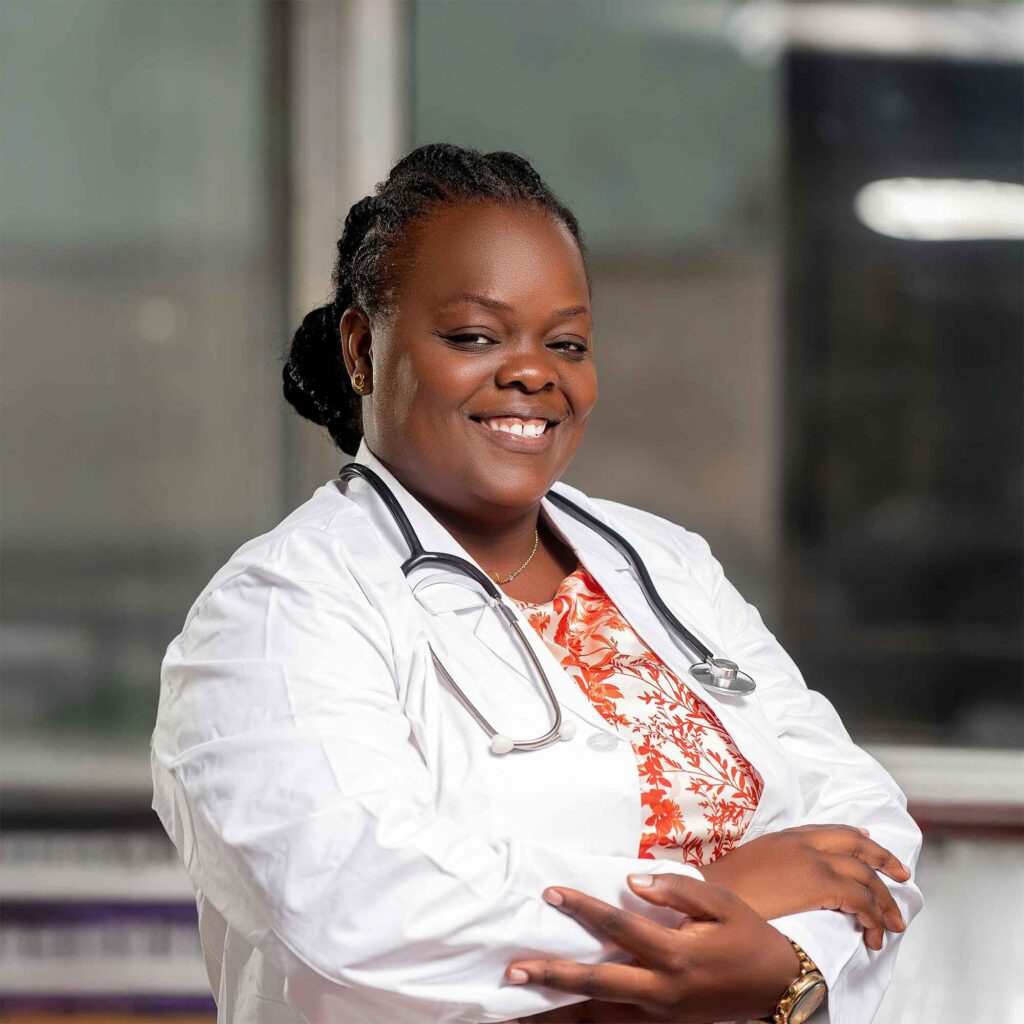- VIYA Health South Africa
Get answers about
Menstrual Health
Ask, Learn, Share
Your questions, answered here

What is menstruation?
Menstruation is a natural process that girls and women need to feel empowered to talk openly about, yet this aspect of health is often still seen as a taboo subject. From the initial phase to menopause, our period affects our physical, psychological and social well-being and the healthiest thing is to talk about it.
When should I get my first period?
The first period, a point in time known as menarche, usually begins between the ages of 12 and 15. Menstruation starting as young as 8 years would still be considered normal.
The average age of the first period is generally later in the developing world, and earlier in the developed world.
The time between my periods has changed, is this normal?
The typical length of time between the first day of one period and the first day of the next is 21 to 45 days in young women. In adults, the range is between 21 and 31 days with the average being 28 days.
I have been bleeding for almost a week, should I be concerned?
Bleeding usually lasts around 2 to 7 days. Periods stop during pregnancy and typically do not resume during the initial months of breastfeeding.
When can I expect my periods to stop?
Menstruation stops occurring after menopause, which usually occurs between 45 and 55 years of age.
I am going on 16 and I have not yet had my period, is this normal?
A lack of periods, known as amenorrhea, is when periods do not occur by age 15 or have not re-occurred in 90 days.
Still have questions?
From periods to pleasure and everything in between
Ask VIYA Health Anything!
When should I get my first period?
The first period, a point in time known as menarche, usually begins between the ages of 12 and 15. Menstruation starting as young as 8 years would still be considered normal.
The average age of the first period is generally later in the developing world, and earlier in the developed world.
I am going on 16 and I have not yet had my period, is this normal?
A lack of periods, known as amenorrhea, is when periods do not occur by age 15 or have not re-occurred in 90 days.
The time between my periods has changed, is this normal?
The typical length of time between the first day of one period and the first day of the next is 21 to 45 days in young women. In adults, the range is between 21 and 31 days with the average being 28 days.
I have been bleeding for almost a week, should I be concerned?
Bleeding usually lasts around 2 to 7 days. Periods stop during pregnancy and typically do not resume during the initial months of breastfeeding.
I seem to be bleeding more than usual, what is a normal amount of blood?
The average volume of menstrual fluid during a monthly menstrual period is 35 millilitres with 10–80 millilitres considered typical.
Menstrual fluid is the correct name for the flow, although many people prefer to refer to it as menstrual blood. Menstrual fluid is reddish-brown, a slightly darker colour than venous blood.
When can I expect my periods to stop?
Menstruation stops occurring after menopause, which usually occurs between 45 and 55 years of age.
Still have questions?
From periods to pleasure and everything in between
Ask VIYA Health Anything!
Can you fall pregnant during your cycle?
During menstruation, the chances of pregnancy are low but not zero. The period itself does not prevent pregnancy, nor does it promote pregnancy.
During the first days of the monthly period, the chances of pregnancy are lowest. As the days go by, the chances of pregnancy increase whether or not she is still bleeding. The risk of pregnancy increases until ovulation.
Still have questions?
From periods to pleasure and everything in between
Ask VIYA Health Anything!
I feel tired an irritable during my period, do all women feel this?
Up to 80% of women do not experience problems sufficient to disrupt daily functioning either during menstruation or in the days leading up to menstruation.
Symptoms in advance of menstruation that do interfere with normal life are called premenstrual syndrome (PMS). Some 20 to 30% of women experience PMS, with 3 to 8% experiencing severe symptoms. These include acne, tender breasts, bloating, feeling tired, irritability, and mood changes. Other symptoms some women experience include painful periods and heavy bleeding during menstruation and abnormal bleeding at any time during the menstrual cycle.
I experience a lot of brain fog during my period, should I be concerened?
In most women, various physical changes are brought about by fluctuations in hormone levels during the menstrual cycle. This includes muscle contractions of the uterus (menstrual cramping) that can precede or accompany menstruation. Many women experience painful cramps, also known as dysmenorrhea, during menstruation. Among adult women, that pain is severe enough to affect daily activity in only 2%–28%. Severe symptoms that disrupt daily activities and functioning may be diagnosed as a premenstrual dysphoric disorder. These symptoms can be severe enough to affect a person’s performance at work, school, and in everyday activities in a small percentage of women.
I experience severe cramps during my period, should I seek medical advice?
In most women, various physical changes are brought about by fluctuations in hormone levels during the menstrual cycle. This includes muscle contractions of the uterus (menstrual cramping) that can precede or accompany menstruation. Many women experience painful cramps, also known as dysmenorrhea, during menstruation. Among adult women, that pain is severe enough to affect daily activity in only 2%–28%. Severe symptoms that disrupt daily activities and functioning may be diagnosed as a premenstrual dysphoric disorder. These symptoms can be severe enough to affect a person’s performance at work, school, and in everyday activities in a small percentage of women.
Is it normal to have cramps or other severe symptoms during my period?
Yes, it’s common to experience some discomfort during your period. Hormonal changes throughout the menstrual cycle can cause physical symptoms like muscle contractions in the uterus, which lead to cramps—this is known as dysmenorrhea. Many women feel cramps before or during their period.
For most, these symptoms are manageable. However, around 2% to 28% of adult women experience cramps that are painful enough to interfere with daily activities. In more severe cases, symptoms may be part of a condition called Premenstrual Dysphoric Disorder (PMDD). PMDD can cause significant emotional and physical challenges that impact school, work, or personal life.
If your symptoms are intense or getting in the way of daily functioning, it’s a good idea to talk to a healthcare professional for support and treatment options.
Still have questions?
From periods to pleasure and everything in between
Ask VIYA Health Anything!
Will sterilisation change a woman’s monthly bleeding or make monthly bleeding stop?
Up to 80% of women do not experience problems sufficient to disrupt daily functioning either during menstruation or in the days leading up to menstruation.
Symptoms in advance of menstruation that do interfere with normal life are called premenstrual syndrome (PMS). Some 20 to 30% of women experience PMS, with 3 to 8% experiencing severe symptoms. These include acne, tender breasts, bloating, feeling tired, irritability, and mood changes. Other symptoms some women experience include painful periods and heavy bleeding during menstruation and abnormal bleeding at any time during the menstrual cycle.
Will the sponge affect my menstrual cycle?
Up to 80% of women do not experience problems sufficient to disrupt daily functioning either during menstruation or in the days leading up to menstruation.
Symptoms in advance of menstruation that do interfere with normal life are called premenstrual syndrome (PMS). Some 20 to 30% of women experience PMS, with 3 to 8% experiencing severe symptoms. These include acne, tender breasts, bloating, feeling tired, irritability, and mood changes. Other symptoms some women experience include painful periods and heavy bleeding during menstruation and abnormal bleeding at any time during the menstrual cycle.
Can I use the sponge daily and even during my menstruation?
Up to 80% of women do not experience problems sufficient to disrupt daily functioning either during menstruation or in the days leading up to menstruation.
Symptoms in advance of menstruation that do interfere with normal life are called premenstrual syndrome (PMS). Some 20 to 30% of women experience PMS, with 3 to 8% experiencing severe symptoms. These include acne, tender breasts, bloating, feeling tired, irritability, and mood changes. Other symptoms some women experience include painful periods and heavy bleeding during menstruation and abnormal bleeding at any time during the menstrual cycle.
Is it safe to wear tampons during my period if I have an IUD fitted?
Up to 80% of women do not experience problems sufficient to disrupt daily functioning either during menstruation or in the days leading up to menstruation.
Symptoms in advance of menstruation that do interfere with normal life are called premenstrual syndrome (PMS). Some 20 to 30% of women experience PMS, with 3 to 8% experiencing severe symptoms. These include acne, tender breasts, bloating, feeling tired, irritability, and mood changes. Other symptoms some women experience include painful periods and heavy bleeding during menstruation and abnormal bleeding at any time during the menstrual cycle.
Can I use the female condom during menstruation?
Up to 80% of women do not experience problems sufficient to disrupt daily functioning either during menstruation or in the days leading up to menstruation.
Symptoms in advance of menstruation that do interfere with normal life are called premenstrual syndrome (PMS). Some 20 to 30% of women experience PMS, with 3 to 8% experiencing severe symptoms. These include acne, tender breasts, bloating, feeling tired, irritability, and mood changes. Other symptoms some women experience include painful periods and heavy bleeding during menstruation and abnormal bleeding at any time during the menstrual cycle.
Will the hormones of the contraceptive patch affect my periods?
Up to 80% of women do not experience problems sufficient to disrupt daily functioning either during menstruation or in the days leading up to menstruation.
Symptoms in advance of menstruation that do interfere with normal life are called premenstrual syndrome (PMS). Some 20 to 30% of women experience PMS, with 3 to 8% experiencing severe symptoms. These include acne, tender breasts, bloating, feeling tired, irritability, and mood changes. Other symptoms some women experience include painful periods and heavy bleeding during menstruation and abnormal bleeding at any time during the menstrual cycle.
Still have questions?
From periods to pleasure and everything in between
Ask VIYA Health Anything!

Need More Support?
Have questions about reproductive or sexual health not covered in our FAQs?
Chat with us here at VIYA Health anytime for clear, confidential answers.
VIYA Health is here to answer all your questions about Menstrual Health
🤰 Trusted Support, Just for You
At VIYA Health, our pregnancy experts are here to help — real professionals with real answers.
If your question isn’t covered in the FAQs, just ask us here.
We’ll get you the guidance you need to feel confident and cared for.
Ask Us Anything
Reimagining Women's Healthcare:A Comprehensive Digital Ecosystem
Looking for quality care? VIYA Health connects you to 20+ vetted sexual and reproductive health professionals in many specialties.
Search either our Doctor Locator map or featured Services List to find our recommended expert near you.

Join the VIYA Health Community
Be Part of our Global Mission for Better Sexual Health and Wellness
Let’s change the conversation — together.
By speaking openly about sexual health and pleasure, we help break taboos and create lasting change. Join VIYA Health’s global dialogue and help shape a world where every woman’s pleasure, wellness, and health are truly prioritised.
